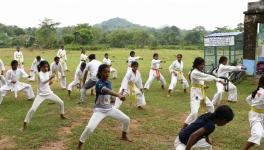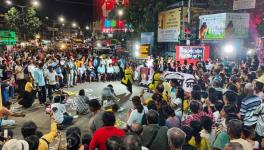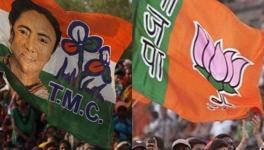West Bengal: Bleak Future ahead for Tourism Sector, Workforce Struggles to Get by
Representational use only.
Kolkata, July 22: Subir Ghosh, a small-time tourism operator, has been warding off bankers demanding that their loan amount be repaid, at a time when the industry is in a literal shutdown. “We are already dead; there is no chance of a revival,” he said in desolate voice. Subir is one of 45% of the tour operators who have decided to leave the industry having falled on hardships during the COVID-19 pandemic. A total of two lakh people from West Bengal are enaged with the sector and the number of total dependents is over a million people in the state.
The tourism sector in North Bengal – where Subir is from – contributes to the majority of tourist inflow to the state. It now stares at an uncertain future with regulation after regulation being imposed on the sector in the name of maintaining COVID protocols. It was first decided that rapid antigen tests would be administered at differnent points so that tourists could enter north Bengal, particularly Dooars and Darjeeling. However, later the state government issued a new notice calling for either fully-vaccinated people or that RT-PCRs tests would be mandatory. The prohitive costs of the tests are too much for budget tourists, tour operators feel.
Most of the above spots are closed and tourism has only just begun again in the north after the second COVID-19 wave. West Bengal draws only about three per cent of domestic tourists and six per cent of foreign tourists in India. Meanwhile, the public funding in West Bengal’s tourism sector had gone up from Rs 35 crore to Rs 400 crore in the six years prior to 2017.
Following the first phase of tourism since the pandemic broke came the state elections, which broke the tourism sector's back, according to Raj Basu from the Association for Tourism and Conservation (ACT), a Siliguri-based tourism body from state. He added that those between the 22 and 45 age-bracket had already begun venturing out and have started booking tickets . Interestingly, he said that eco-tourism, which depends on resilient village communities, can survive on its own, unlike the hotel sector, where the COVID crisis has taken its toll. What has happened in the self-financed village communities is that though they have enough food and a roof above their heads, they are faced with difficulties like paying the school fees or medical expenses. "They are now very cash-starved," he told Newsclick, adding that close to "43% of those who were engaged with tourism, especially those in the catering services, have left the sector. Many are selling vegetables or fish on the roadside. It is a challenge for all of us to make them rejoin the sector," he said .
Speaking to Newsclick, Samrat Sanyal, general secretary of the Himalayan Hospitality and Tourism Development Network, said: "Many entepreneurs working on a small-scale have perished and the overall scenario looks bad. No statutory help has come either from Centre or the state government. Owing to health protocols the tourist influx is still low. At this point in time either a cash transfer or benefit from service tax is necessary for the industry to survive. There should be a proper plan behind it. Only 934 tour operators in India have been given the governmental benefit of a Rs 10 lakh collateral-free loan. That is not even sufficient for them and that number (934) is too less as out of tens of thousands of tour operators only those many qualified for loans. North Bengal has over 800 tour operators 2,300 homestays and 3,000 hotels, which are now trying to create a balance between health parameters and livelihood parameters. We have employees who have worked with us for more than a couple of decades and they are not even getting between 20% to 30% of their salary. Depression has set in the entire industry," he said .
Animesh Basu of the Himalayan Nature and Adventure Foundation (a non-profit organisation) was more forthcoming in assessing the damage done to the industry. He said that "due to the double-dose protocol many bookings have been cancelled and lot of confusion has set in. While the Goverrnment has said the RT-PCR report is valid option instead of double-dose vaccination, it takes three days for the report to come through, creating turmoil."
Interestingly, the other, bigger circuit of tourism that is the Sundarbans in South Bengal, was already closed after Cyclone Yaas. Boat owners have put their boats to other use as many are still suffering after-effects of the disaster. The situation in Shantiniketan is no better either. Being a university city, which has been closed in light of the pandemic, the tourism influx has hit a record low there too. Its markets are rarely open now and lie in wait for Durga Puja.
According to government data, a total of 92.36 million domestic tourists arrived in West Bengal in 2019 with 1.66 million foreign tourist arrrivals in the state. Its prior year saw 85.65 million domestic tourists and 1.61 million foreign tourist arrivals in the state.
Get the latest reports & analysis with people's perspective on Protests, movements & deep analytical videos, discussions of the current affairs in your Telegram app. Subscribe to NewsClick's Telegram channel & get Real-Time updates on stories, as they get published on our website.
























